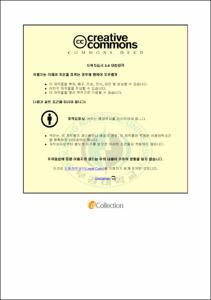육색사고모기법을 활용한 이야기나누기활동이 유아의 창의성 및 언어표현력에 미치는 영향
- Abstract
- THE EFFECTS OF STORY SHARING ACTIVITIES USING SIX THINKING HATS ON YOUNG CHILDREN'S CREATIVITY AND VERBAL EXPRESSION ABILITIES
Gong Min Bae
Early Childhood Education Graduate School of Education Pukyong National University
Abstract
The purpose of this study was to examine the role of storytelling activities using the Six Thinking Hat technique on children’s creativity and language expressiveness and to offer basic materials for educational/lesson methods to help promote children’s creativity and language expressiveness.
Research questions were set as follows for the purposes of this study.
1. What role did storytelling activities using the Six Thinking Hat technique play on children’s creativity?
2. What role did storytelling activities using the Six Thinking Hat technique play on children’s language expressiveness?
This study was conducted on children at D kindergarten in Busan. The experimental group consisted of 25 students and the control group of 27 students for a total of 52 students.
The experiment took place between December 3rd, 2013 and January 29th, 2014, with activities carried out 16 times in total 2-3 times per week for a period of 7 weeks (excluding the school vacation period). Each activity time lasted 40-50 minutes. While the children in the experimental group did storytelling activities using the Six Thinking Hat technique, the children in the control group did storytelling related to topics in everyday life.
Measurement of children’s creativity for this study was done using Kim Young-chae’s (2010) Korean standardized version of the Torrance creative thinking test (Torrance Test of Creative Thinking: TTCT; Thinking Creatively with Pictures, Form A, B 2010 revised version.) Torrance’s creative thinking test comprises language tests and figure tests and is divided into A and B types; the A type figure test was used for this study. The language expressiveness test used to measure influence on children’s language expressiveness was Kang Nam-hee’s (2010) language expressiveness test (Looking at Pictures and Making Stories I).
SPSS (PASW) 18.0, a statistics program, was used to handle statistics in this study. Mean and standard deviation were calculated in order to assess the role of storytelling activities using the Six Thinking Hat technique on children’s creativity and language expressiveness, and analysis covariance (ANCOVA) was performed.
Results of the study can be summarized as follows.
Firstly, the experimental group which experienced storytelling using the Six Thinking Hat technique showed a statistically significant increase in creativity compared to the control group which did not experience storytelling with the Six Thinking Hat technique. The experimental group had statistically significant higher scores in the creative fields of originality, abstractness of titles and elaboration; thus, it can be concluded that storytelling using the Six Thinking Hat technique had a positive effect on creativity in children.
Secondly, the experimental group which experienced storytelling using the Six Thinking Hat technique showed a statistically significant increase in language expressiveness compared to the control group which did not experience storytelling with the Six Thinking Hat technique.
The results of this study show that storytelling using the Six Thinking Hat technique is an effective method to increase children’s creativity and language expressiveness. This offers an opportunity for the development of children’s creativity and language using various creative thinking techniques such as the Six Thinking Hat technique in early childhood education. The researcher believes that development of educational methods to help children express themselves and their thoughts well by implementing various storytelling techniques during early childhood, in which children are full of creative imagination, is needed.
- Issued Date
- 2014
- Awarded Date
- 2014. 8
- Type
- Dissertation
- Publisher
- 부경대학교
- Affiliation
- 교육대학원
- Department
- 교육대학원 유아교육전공
- Advisor
- 황희숙
- Table Of Contents
- 목 차
Ⅰ. 서 론 1
1. 연구의 필요성 및 목적 1
2. 연구문제 5
3. 용어의 정의 6
Ⅱ. 이론적 배경 9
1. de Bono의 사고이론 9
2. 육색사고모 기법 11
3. 창의성 20
4. 이야기나누기 활동 26
5. 언어표현력 28
Ⅲ. 연구 방법 31
1. 연구대상 31
2. 연구 도구 31
3. 연구 절차 37
4. 자료 분석 43
IV. 연구 결과 44
1. 육색사고모 기법을 활용한 이야기나누기 활동이 유아의 창의성에 미 치는 영향 44
2. 육색사고모 기법을 활용한 이야기나누기활동이 유아의 언어표현력에 미치는 영향 51
V. 논의 및 결론 54
참고문헌 59
부 록 65
- Degree
- Master
- Files in This Item:
-
-
Download
 육색사고모기법을 활용한 이야기나누기활동이 유아의 창의성 및 언어표현력에 미치는 영향.pdf
기타 데이터 / 796.74 kB / Adobe PDF
육색사고모기법을 활용한 이야기나누기활동이 유아의 창의성 및 언어표현력에 미치는 영향.pdf
기타 데이터 / 796.74 kB / Adobe PDF
-
Items in Repository are protected by copyright, with all rights reserved, unless otherwise indicated.